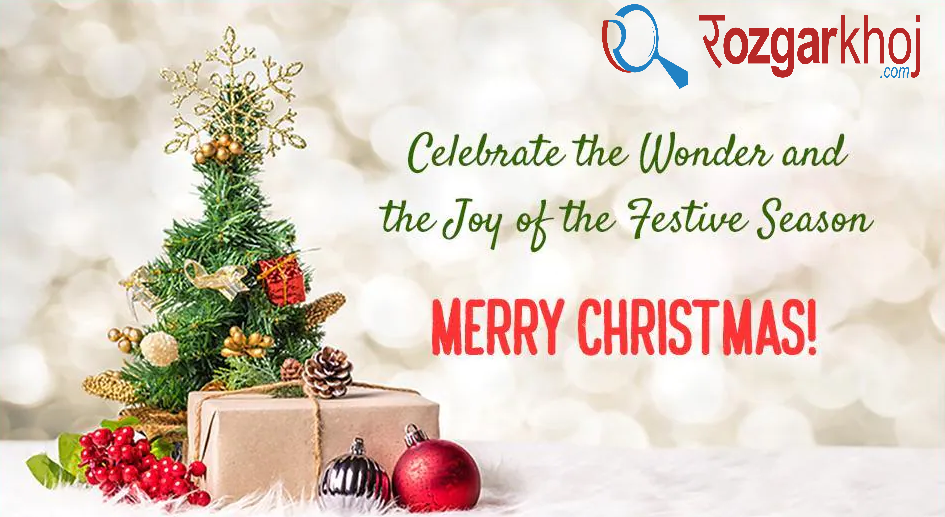[vc_row][vc_column][vc_column_text] [/vc_column_text][vc_column_text]
Introduction:
Welcome to the most wonderful time of the year! As Christmas bells chime and the holiday spirit fills the air, we invite you to explore our enchanting festive collection. Embrace the magic of the season with handpicked treasures that promise to make your celebrations merry and bright.
“Step into a world of festive enchantment as the holiday season unfolds! Welcome to our Christmas Wonderland, where joyous celebrations and timeless traditions come together in perfect harmony. This year, we invite you to discover a curated collection that captures the spirit of Christmas, from dazzling decorations to thoughtful gifts and fashion that sparkles. Embrace the magic and make this holiday season unforgettable with our handpicked treasures. Let the countdown to Christmas joy begin!”[/vc_column_text][/vc_column][/vc_row][vc_row][vc_column][vc_column_text]
History
The history of Christmas is a rich tapestry woven with religious, cultural, and festive threads. While the celebration’s origins are rooted in Christianity, many traditions associated with Christmas have evolved over centuries.
Religious Origins:
Christmas commemorates the birth of Jesus Christ, and its roots can be traced back to the early Christian Church. The exact date of Jesus’ birth is not specified in the Bible, and December 25 was chosen in the 4th century to coincide with pagan winter solstice celebrations.
Pagan Influences:
The midwinter festivals celebrated by various cultures influenced the timing of Christmas. In ancient Rome, the festival of Saturnalia, a time of feasting and gift-giving, coincided with the December solstice. Similarly, Germanic tribes celebrated Yule, a festival lasting 12 days.
Medieval Celebrations:
During the Middle Ages, Christmas celebrations varied across Europe. In some regions, Christmas Day was a solemn religious observance, while in others, it was marked by festive revelry and feasting.
Puritan Opposition:
In the 17th century, Puritans in England and later in the American colonies opposed the celebration of Christmas, viewing it as a pagan-influenced holiday. Christmas was even banned in England during the mid-17th century under Oliver Cromwell.
Revival in the Victorian Era:
The 19th century saw a revival of Christmas traditions, particularly in England. Queen Victoria and Prince Albert popularized the Christmas tree tradition after a depiction of their family around a decorated tree appeared in the Illustrated London News in 1848.
Santa Claus and Gift-Giving:
The modern image of Santa Claus, a plump, jolly figure in a red suit, was popularized in the United States in the 19th century. The character draws inspiration from various figures, including Saint Nicholas, a 4th-century bishop known for his generosity.
Globalization of Christmas:
Over time, Christmas has become a global celebration, embraced by people of various faiths and cultures. The holiday is marked by a diverse array of traditions, including gift exchanges, festive decorations, and special meals.
Today, Christmas is celebrated in numerous ways around the world, blending religious significance with cultural practices and creating a season of warmth, generosity, and togetherness. The history of Christmas reflects the evolving nature of traditions as they adapt to the changing times and diverse communities that embrace this joyous holiday.[/vc_column_text][vc_single_image image=”2891″ img_size=”500*700″][/vc_column][/vc_row][vc_row][vc_column][vc_column_text]
Significance
Christmas holds deep significance for people around the world, and its importance is multi-faceted, encompassing religious, cultural, and personal dimensions. Here are some key aspects that contribute to the significance of Christmas:
- Religious Significance:
- Christian Celebration: Christmas is primarily a Christian holiday commemorating the birth of Jesus Christ. It marks the incarnation of God as a human being, emphasizing themes of love, peace, and salvation.
- Advent Season: The weeks leading up to Christmas, known as Advent, are a time of reflection, preparation, and anticipation in Christian traditions.
- Cultural Traditions:
- Family and Togetherness: Christmas is a time when families come together to celebrate and share joy. It emphasizes the importance of spending quality time with loved ones.
- Gift-Giving: The tradition of giving and receiving gifts is symbolic of the gifts presented to Jesus by the Magi. It reflects the spirit of generosity and kindness.
- Symbolism and Rituals:
- Christmas Tree: The decorated Christmas tree symbolizes life and light during the dark winter months. It has become a universal symbol of the season’s joy and festivity.
- Candles and Lights: The use of candles and lights symbolizes the hope and warmth that Christmas brings, representing the idea that Jesus is the “Light of the World.”
- Acts of Kindness and Charity:
- Spirit of Giving: Christmas encourages acts of kindness and generosity. Many people participate in charitable activities, donating to those in need and volunteering to make a positive impact on their communities.
- Global Celebration:
- Cultural Exchange: Christmas is celebrated in diverse ways around the world, incorporating local traditions and customs. It serves as a global celebration that brings people of different cultures and backgrounds together.
- Reflection and Renewal:
- End of the Year Reflection: Christmas often marks the end of the calendar year, prompting reflection on the past year’s events and a sense of hope and renewal for the coming year.
- New Beginnings: The birth of Jesus is seen as a symbol of new beginnings and the promise of a better future.
- Joy and Festivity:
- Celebration of Life: Christmas is a celebration of life, joy, and the positive aspects of the human experience. The festive atmosphere, decorations, music, and gatherings contribute to a sense of happiness and merriment.
[/vc_column_text][/vc_column][/vc_row][vc_row][vc_column][vc_single_image image=”2892″ img_size=”800*600″][/vc_column][/vc_row][vc_row][vc_column][vc_column_text]
Celebrations
The celebrations of Christmas are diverse and can vary across cultures and individual traditions. However, there are some common elements that make Christmas a universally celebrated and cherished holiday. Here are various aspects of Christmas celebrations:
- Decorations:
- Christmas Trees: Families often decorate Christmas trees with ornaments, lights, and tinsel. The tree is a central symbol of Christmas, representing life and light.
- Lights and Illuminations: Homes, streets, and public spaces are adorned with festive lights, creating a magical and warm atmosphere.
- Gift-Giving:
- Exchanging Gifts: One of the most well-known traditions involves the exchange of gifts among family and friends. This practice symbolizes the gifts given to baby Jesus by the Magi and reflects the spirit of generosity.
- Feasting and Special Meals:
- Christmas Dinner: Families often gather for a special Christmas dinner featuring traditional dishes. The menu can vary, but roast turkey, ham, or other festive foods are common.
- Baking and Treats: Christmas is a time for baking and enjoying special treats like cookies, cakes, and candies.
- Religious Observances:
- Church Services: Many Christians attend special Christmas Eve or Christmas Day church services to celebrate the birth of Jesus. The services often include carol singing and readings from the Bible.
- Music and Carols:
- Christmas Carols: Festive music is an integral part of Christmas celebrations. Whether sung at church, in community events, or at home, Christmas carols contribute to the joyful ambiance.
- Advent Calendar and Wreaths:
- Counting Down to Christmas: The Advent calendar, with its daily openings leading up to December 25, is a popular tradition for children. Advent wreaths with candles are also used to mark the weeks preceding Christmas.
- Santa Claus and Gift Bringers:
- Visit from Santa Claus: In many cultures, especially in Western countries, Santa Claus is a beloved figure who brings gifts to children on Christmas Eve.
- Other Gift Bringers: Different cultures have their own variations of gift-bringing figures, such as Father Christmas, Kris Kringle, or the Christkind.
- Nativity Scenes and Displays:
- Depicting the Nativity: Nativity scenes, which depict the birth of Jesus, are commonly displayed in homes, churches, and public places.
- Community Events and Parades:
- Christmas Parades: Many communities organize festive parades featuring Santa Claus, carolers, and elaborately decorated floats.
- Community Events: Christmas markets, concerts, and festivals bring communities together for shared celebrations.
- Acts of Kindness and Charity:
- Giving Back: Christmas is a time for charitable activities, with many people donating to those in need and volunteering in their communities.
[/vc_column_text][/vc_column][/vc_row][vc_row][vc_column][vc_column_text]
Celebrations on Dussehra
People celebrate Dussehra in various ways. Let’s understand them
Fire Pujas and Rituals
On Dussehra, believers rise early to perform pooja at temples or personal shrines. Many people also practise havan and fire rituals, which involve making offerings to the sacred fire. People perform these rites to honour Goddess Durga, Lord Rama, and Lakshmi. People recite special prayers to honour the triumph of good over evil.
Family Get-togethers
Dussehra is a time for family gatherings and reunions. People visit their loved ones, exchanging sweets, gifts, and well wishes. On this auspicious occasion, elders bless the younger members of the family. Families create special dinners and organise feasts.
Flying a Kite
Flying kites is a famous Dussehra practice in many parts of India. People assemble on terraces and lawns to fly various coloured and sized kites. Kite fights are also common as people try to cut one other’s kite strings. It contributes to the celebratory atmosphere of the day.
Cultural Displays
On Dussehra, stage performances based on the Ramayana and Mahabharata are there. There are dance and play enactments of Lord Rama’s life, especially his battle with Ravana. The audience sees folk performances, Garba and Dandiya Raas.
Fireworks and Decorations
On Dussehra, houses, temples, and public spaces are decked with flowers, rangolis, and oil lights. As night falls, the skies are lit with magnificent fireworks to commemorate the occasion. In North India, effigies burn as part of the Vijayadashami celebrations.[/vc_column_text][/vc_column][/vc_row][vc_row][vc_column][vc_column_text]
Conclusion
This Christmas, make it memorable with our enchanting collection that embodies the true spirit of the season. Explore our offerings and let the magic of the holidays fill your heart with warmth and joy. From all of us to you, Merry Christmas and Happy Celebrations[/vc_column_text][/vc_column][/vc_row]




